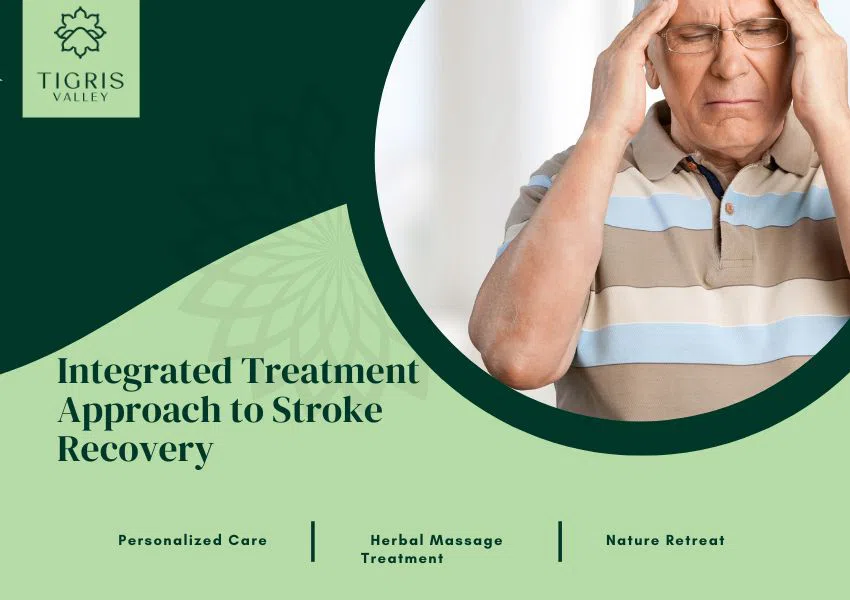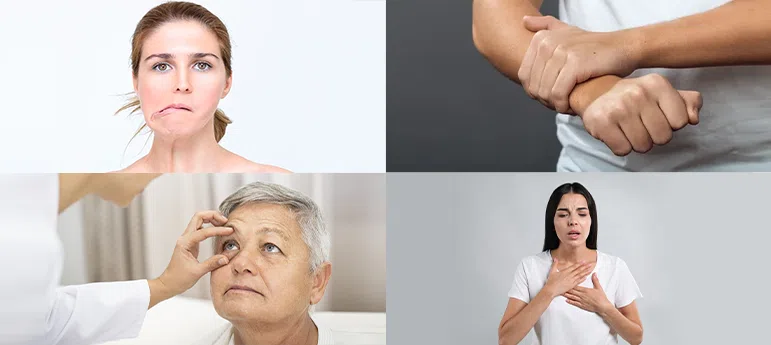
Strokes are a prevalent health concern, with global significance. They stand as the second leading cause of death worldwide, underscoring their widespread impact. In the context of the body, a stroke mirrors what a heart attack is to the heart. Patients with strokes may experience bleeding or blood clots in the brain, causing issues like convulsions.
In Ayurveda, a stroke is called Pakshaghata, caused by imbalances in the Vata dosha, which manages body movements and sensations. Stroke treatment in Kerala aims to revive brain functions. Internal medicines boost blood flow, and natural antioxidants enhance oxygen supply to the brain, renewing cells and minimizing cell damage. External therapies like panchakarma improve the peripheral nerve system, while heat therapy maintains muscle tone, reduces stiffness, and eases spasms. Ayurvedic stroke treatment highlights natural healing through herbal remedies, dietary changes, and lifestyle adjustments. It aims to improve circulation, reduce inflammation, and support brain health. Techniques like Panchakarma may also be used to detoxify the body. It focuses on restoring balance and enhancing recovery for stroke survivors through effective stroke rehabilitation.
1. Sudden numbness or weakness: You may experience sudden numbness or weakness, especially on one side of the face, arm, or leg. This often occurs on just one side of the body.
2. Confusion or difficulty speaking: A person having a stroke may experience sudden confusion, trouble speaking, or difficulty understanding speech. They may slur their words or have difficulty finding the right words.
3. Trouble walking or loss of coordination: Strokes can affect balance and coordination. A person may have difficulty walking, experience dizziness, or have a sudden loss of coordination.
4. Severe headache: A sudden, severe headache that is different from a usual headache may be a sign of a stroke, particularly if it is accompanied by other symptoms, as early intervention is crucial for effective Neuro Rehabilitation and minimizing potential long-term effects
5. Trouble seeing in one or both eyes: Vision problems, such as sudden blurred or blackened vision in one or both eyes, can be a sign of a stroke.
It’s important to remember the acronym FAST to help recognize and respond to the signs of a stroke:

F – Face Drooping: Is one side of the face numb or drooping? To look for signs of facial weakness, ask them to smile.
A-Arms Weakness: Is a single arm numb or weak? Ask the person to raise both to check if one arm is drifting lower.
S – Speaking Difficulty: Is speech slurred or difficult to understand? To screen for speech impediment, ask the person to repeat a short sentence.
T – Time to call emergency services: You must do so right away if you notice any of these symptoms. While treating a stroke, time is of the essence.
◙ Initial Ayurvedic Assessment and Goal Setting
◙ Ayurvedic Physical Therapies
◙ Speech and Language Therapies
◙ Mind-Body Psychological and Emotional Support
◙ Cognitive Enhancement through Ayurvedic Therapies
In Ayurveda stroke treatment, our experts believe these symptoms arise from a blockage in Vata movement. Our therapies aim to remove toxins from the body and restore Vata flow, promoting a quick recovery.
1. Panchakarma Therapy: Panchakarma Treatment is a detoxification and rejuvenation therapy in Ayurveda. It involves various cleansing procedures that may help remove toxins and support the body’s natural healing mechanisms. Panchakarma therapy is often customized to the individual’s condition.
2. Holistic Approach: Ayurveda is a holistic system of medicine that considers the mind, body, and spirit as interconnected. Ayurvedic stroke rehabilitation balances these elements to promote overall well-being and recovery.

3. Dietary Recommendations: Ayurveda emphasizes the importance of a balanced diet to support healing. Ayurvedic stroke rehabilitation services may include dietary recommendations based on an individual’s constitution and specific health needs.
4. Yoga and Meditation: Cardiovascular Disease treatment may incorporate yoga and meditation practices. Gentle yoga and meditation can help improve flexibility, strength, and mental well-being, contributing to the overall rehabilitation process.
5. Improved Circulation and Energy Flow: Ayurvedic treatments often aim to enhance overall circulation and the flow of vital energy (prana) in the body. Improved circulation may aid in the recovery of affected areas and support overall vitality.
◘ Promote Fluid Movement and Strength
◘ Experience Enhanced Speech and Communication
◘ Regain Daily Autonomy
◘ Boost Cognitive Function and Communication
◘ Mitigate Future Stroke Risk
◘ Cultivate Emotional Well-being
At our Ayurvedic Retreat Centre, we recognize the significance of integrating ancient wisdom with modern care. Our approach is not only to address the physical aspects of stroke recovery but also to provide a holistic environment that promotes overall well-being and balance. Time is of the essence, and our Ayurvedic practices are designed to support your journey toward healing and restoration.
Ayurvedic treatment for heat stroke aims to restore balance by cooling the body using appropriate foods and herbs, adjusting lifestyle practices, and ensuring environmental flexibility. Tigris Valley Ayurveda stroke rehabilitation treatments not only address the immediate symptoms but also prevent upcoming issues by maintaining overall balance and wellness.